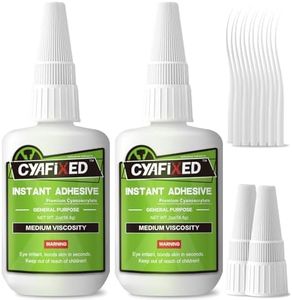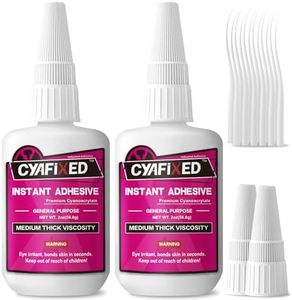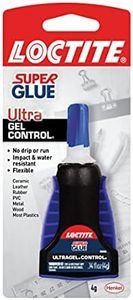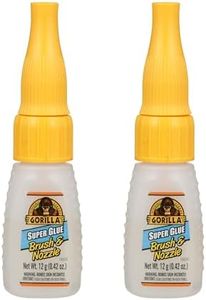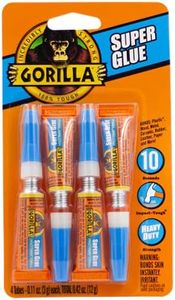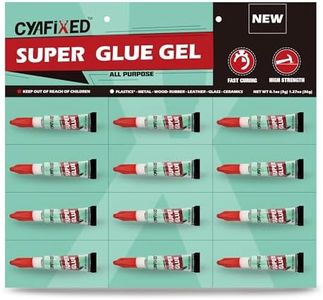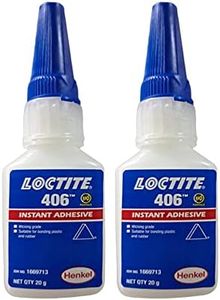We Use CookiesWe use cookies to enhance the security, performance,
functionality and for analytical and promotional activities. By continuing to browse this site you
are agreeing to our privacy policy
10 Best Super Glues
From leading brands and best sellers available on the web.Buying Guide for the Best Super Glues
Selecting the right super glue can make your repair or craft project easier and more effective. Because super glues are designed to bond materials quickly and strongly, there are a variety of types and formulations tailored for different uses. Before buying, consider what you will be gluing together, the environment the bond will be exposed to, and how quickly you need it to set. Think about whether you need a fast fix, a super strong hold, or something that remains flexible after drying. Understanding the key specifications will help guide your choice to ensure you get the most suitable glue for your specific purpose.Bonding Material CompatibilityThis refers to the types of surfaces the glue is designed to adhere to—like plastics, metals, ceramics, wood, rubber, or even glass. Not all super glues work well with every material. When shopping, check if the glue mentions compatibility with your materials; for example, some glues specifically mention being for plastics or can handle mixed materials. If you mostly repair household items, a versatile, all-purpose super glue may be best. For more specialized needs, such as plastic model kits or ceramics, choose a glue formulated for those surfaces.
Setting TimeSetting time is how quickly the glue begins to hold after application. Some super glues set in seconds, which is great for quick fixes but requires you to be precise and quick. Others give you more time to adjust the pieces before they stick. If you’re new to using super glue or need time to position things perfectly, look for one with a slower setting time. For urgent repairs where speed is key, a fast-setting glue is the better choice.
Viscosity (Thickness)Viscosity describes how thick or runny the glue is. Thin (low viscosity) glues spread into seams and can make very tight joints, but may drip or run if used on vertical surfaces. Thicker (high viscosity) glues are easier to control, don’t run as much, and are good for filling small gaps between surfaces. For fine, close-fitting applications, a thin glue is ideal. For filling small cracks or working on vertical surfaces, a gel or thicker glue works better.
Strength and FlexibilitySuper glues vary in how strong and how flexible the final bond is. Standard super glues usually create a very rigid, strong bond that can be brittle if the pieces move or flex a lot. There are also flexible super glues that are less brittle and can handle movement or vibration. If you are gluing something that will be bent, squeezed, or moved—like shoes or phone cases—look for a glue that advertises flexible or impact-resistant bonding. For static repairs, like china or metal, maximum strength is usually more important.
Water and Temperature ResistanceSome super glues can handle exposure to water, humidity, or high/low temperatures, while others cannot. If your repair will be exposed to weather, moisture, or heat—like outdoor items or kitchen gadgets—you should look for waterproof or temperature-resistant options. For indoor, dry, and temperature-stable uses, standard super glue is usually sufficient.
Applicator TypeThis refers to the design of the glue container, such as brush, nozzle, or squeeze-tube, which affects precision and ease of use. Nozzles allow for pinpoint application, brushes are good for spreading over larger surfaces, and squeeze tubes are simple but sometimes less precise. If neatness and precision are essential, opt for a fine nozzle or brush. For larger repairs where coverage matters more than exactness, any applicator will do.
